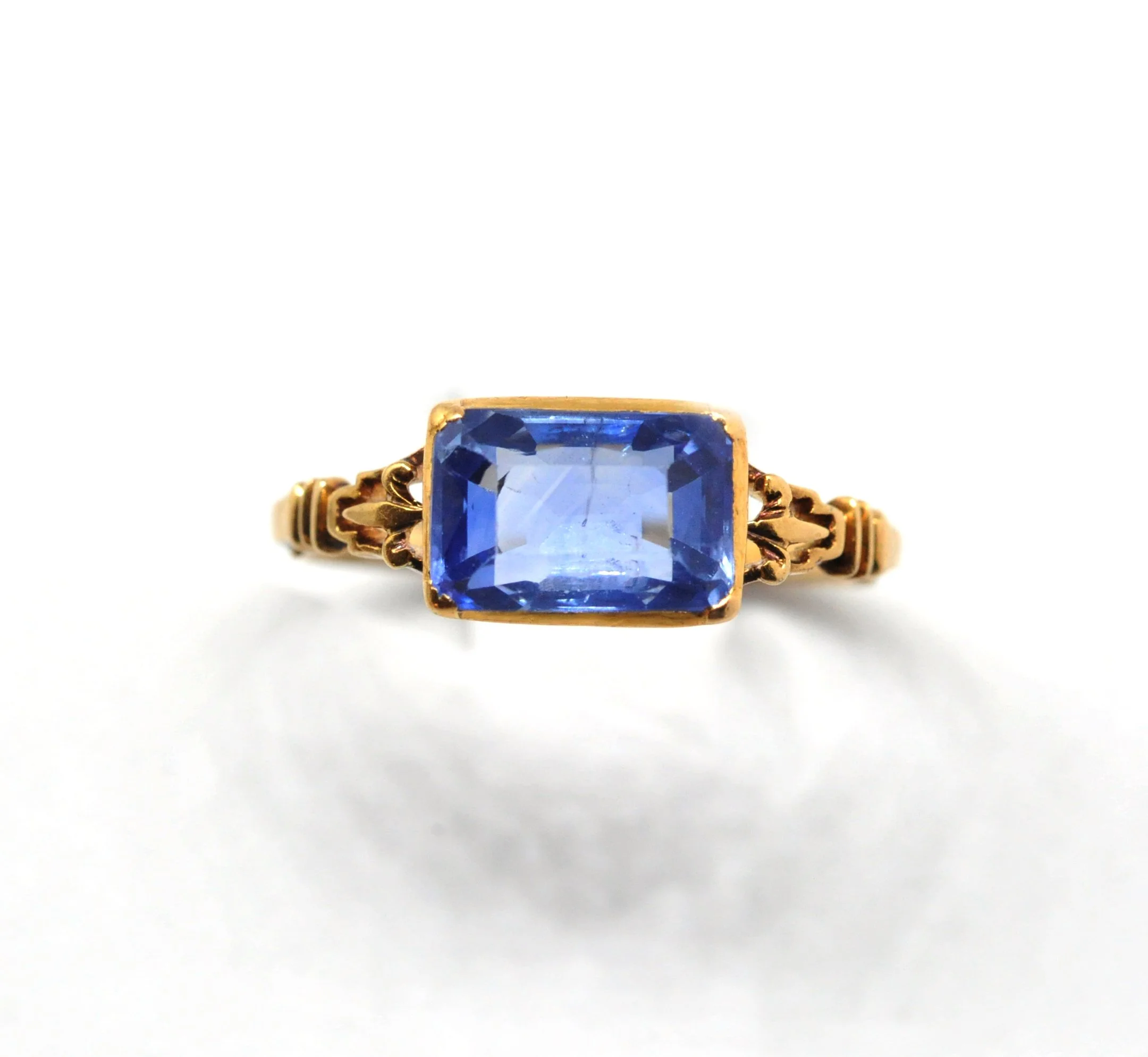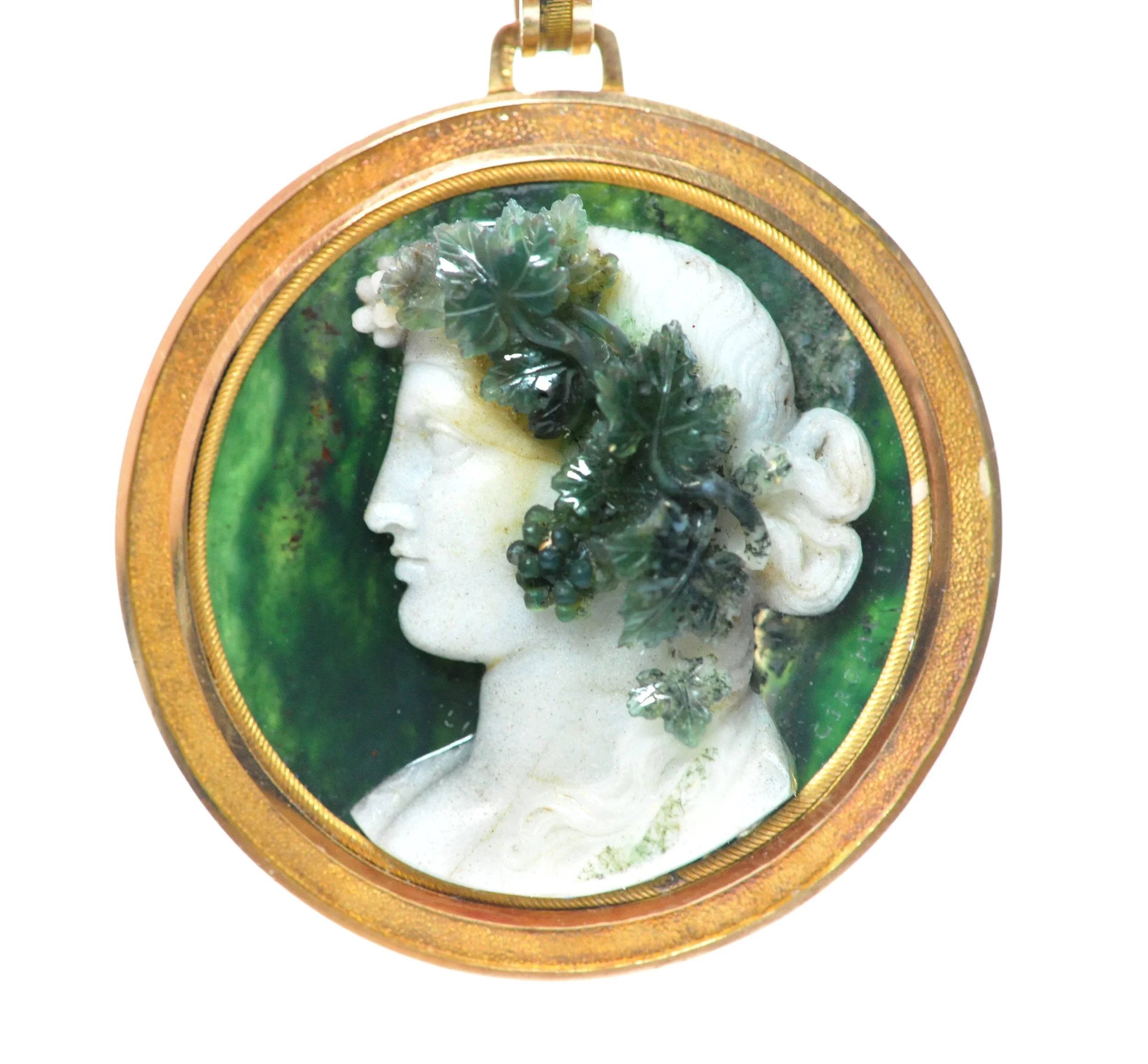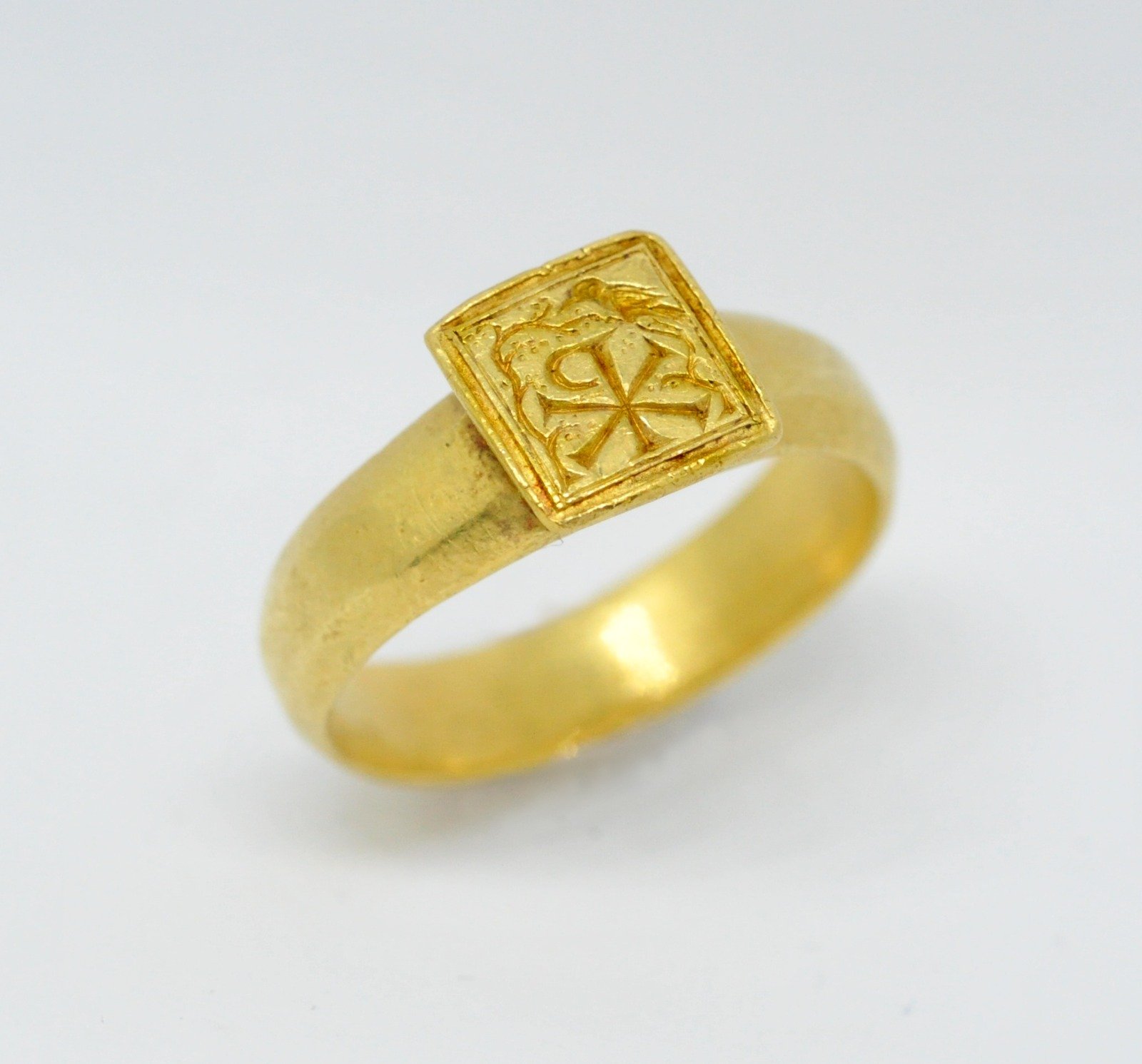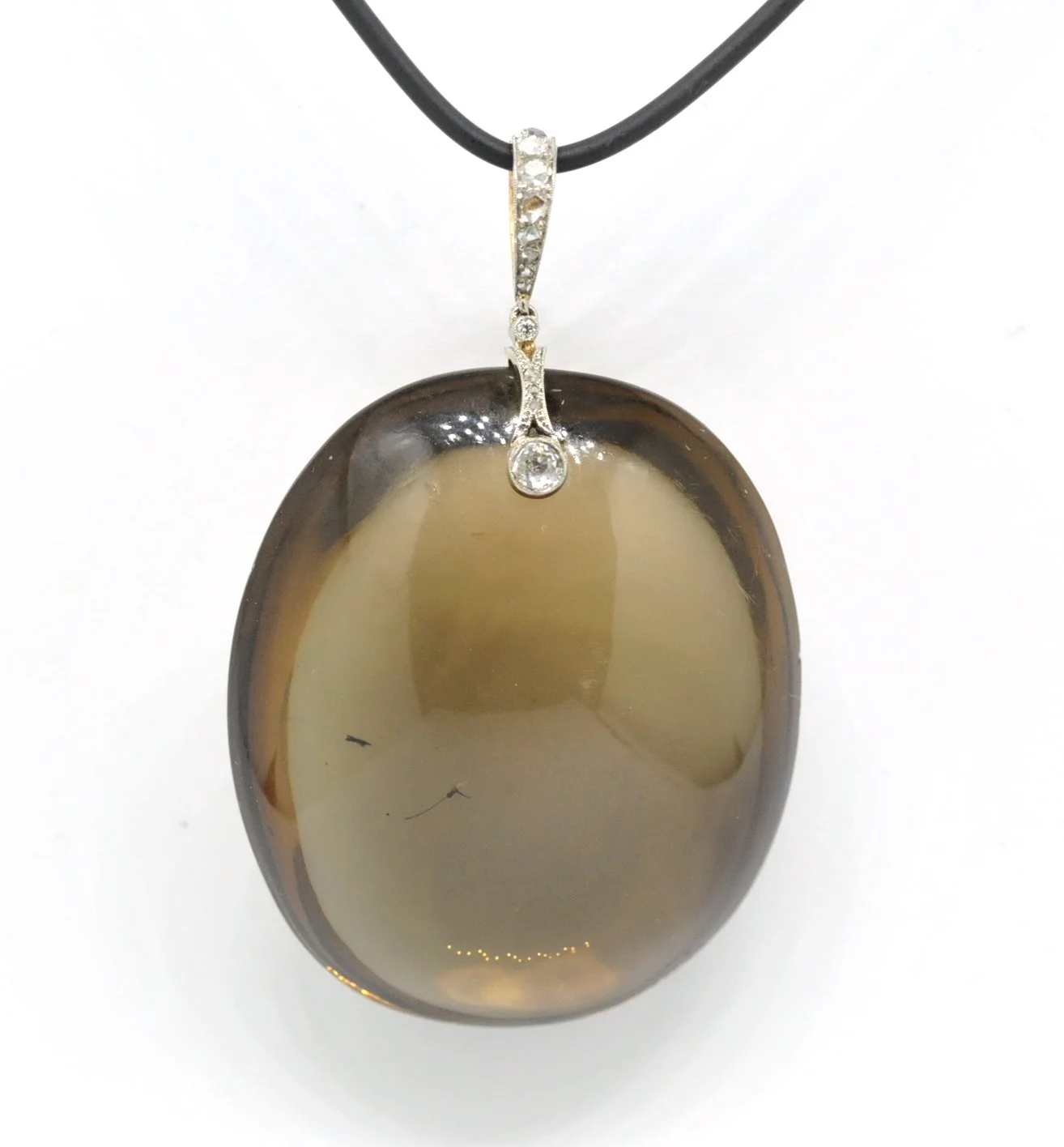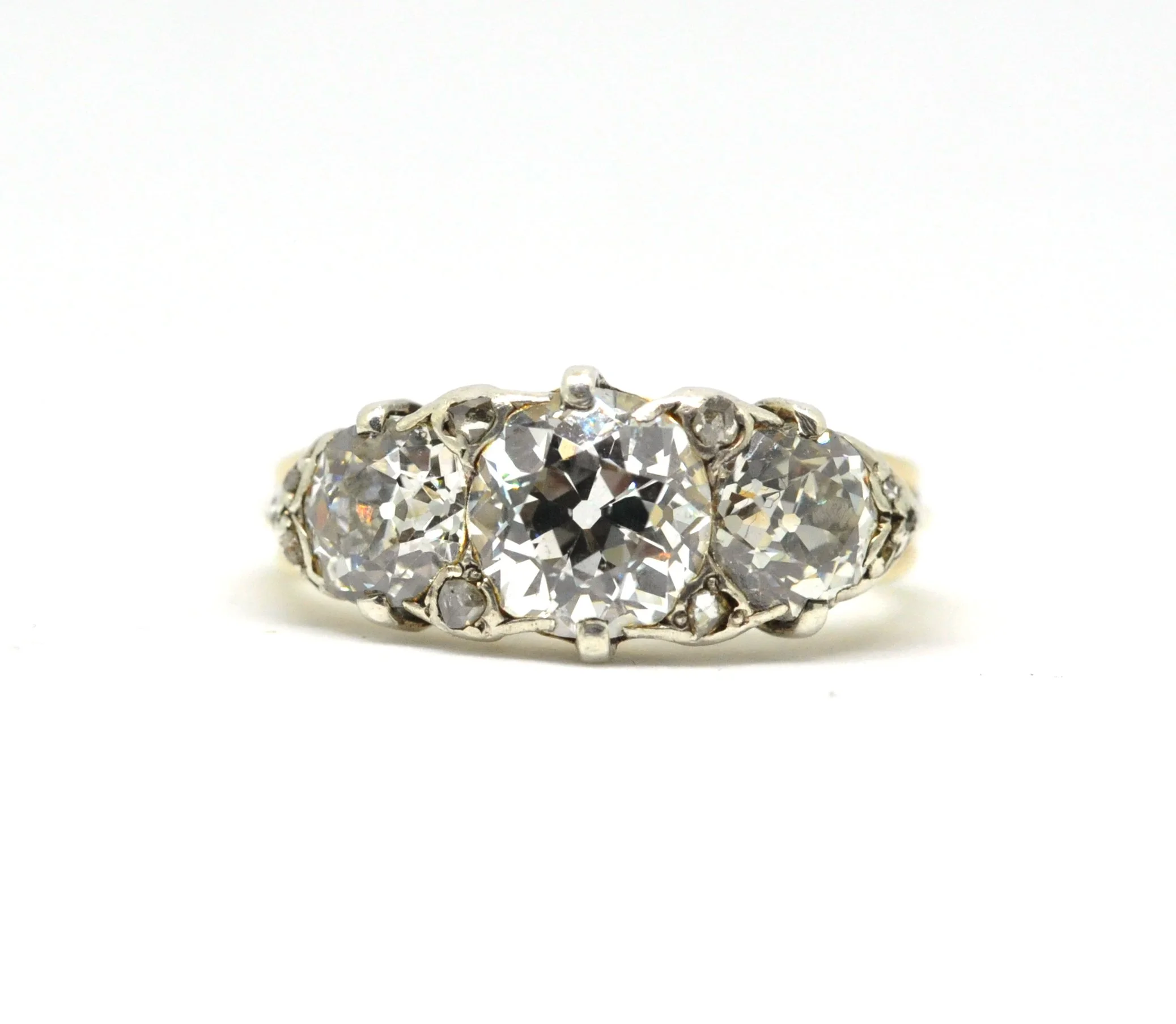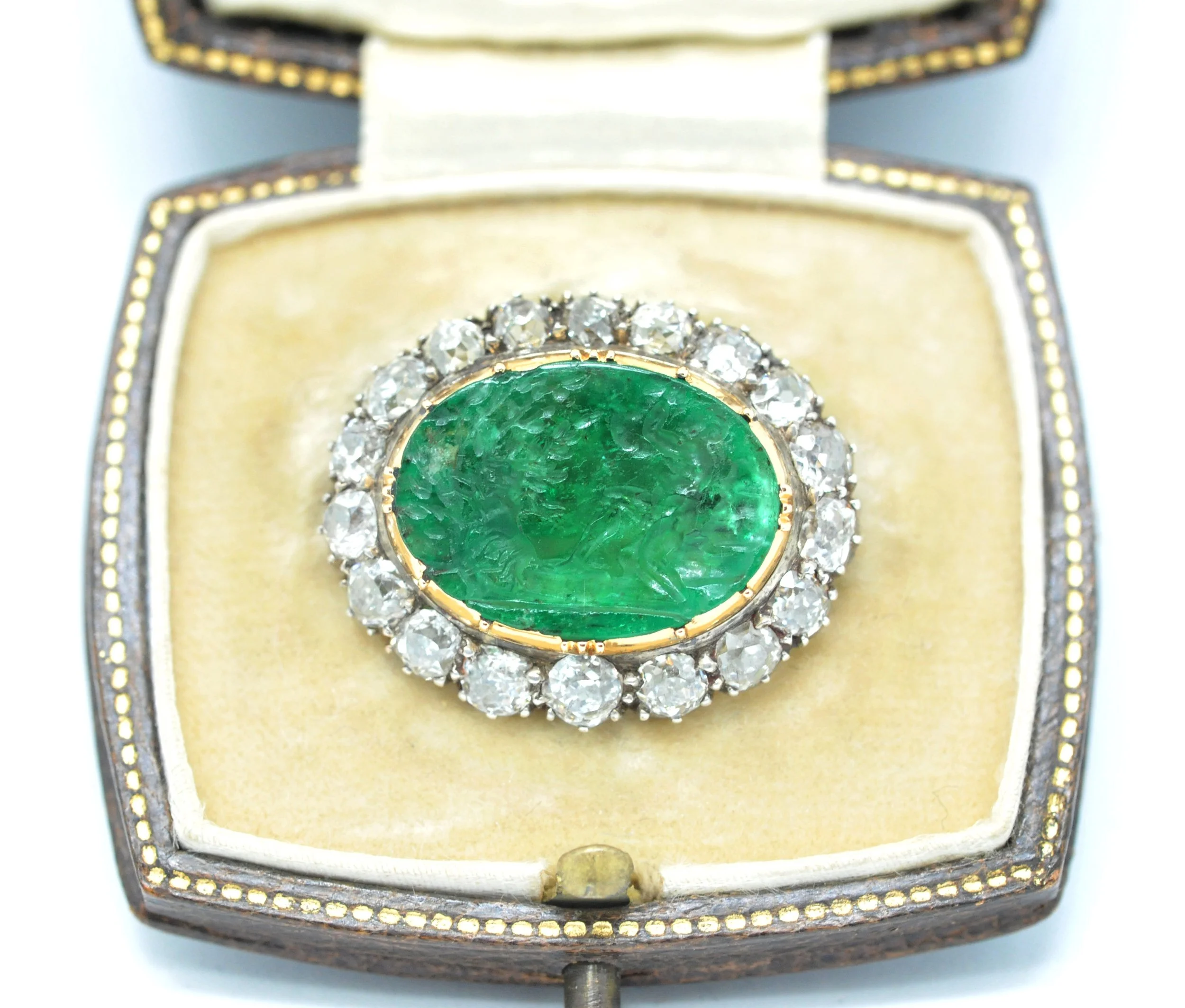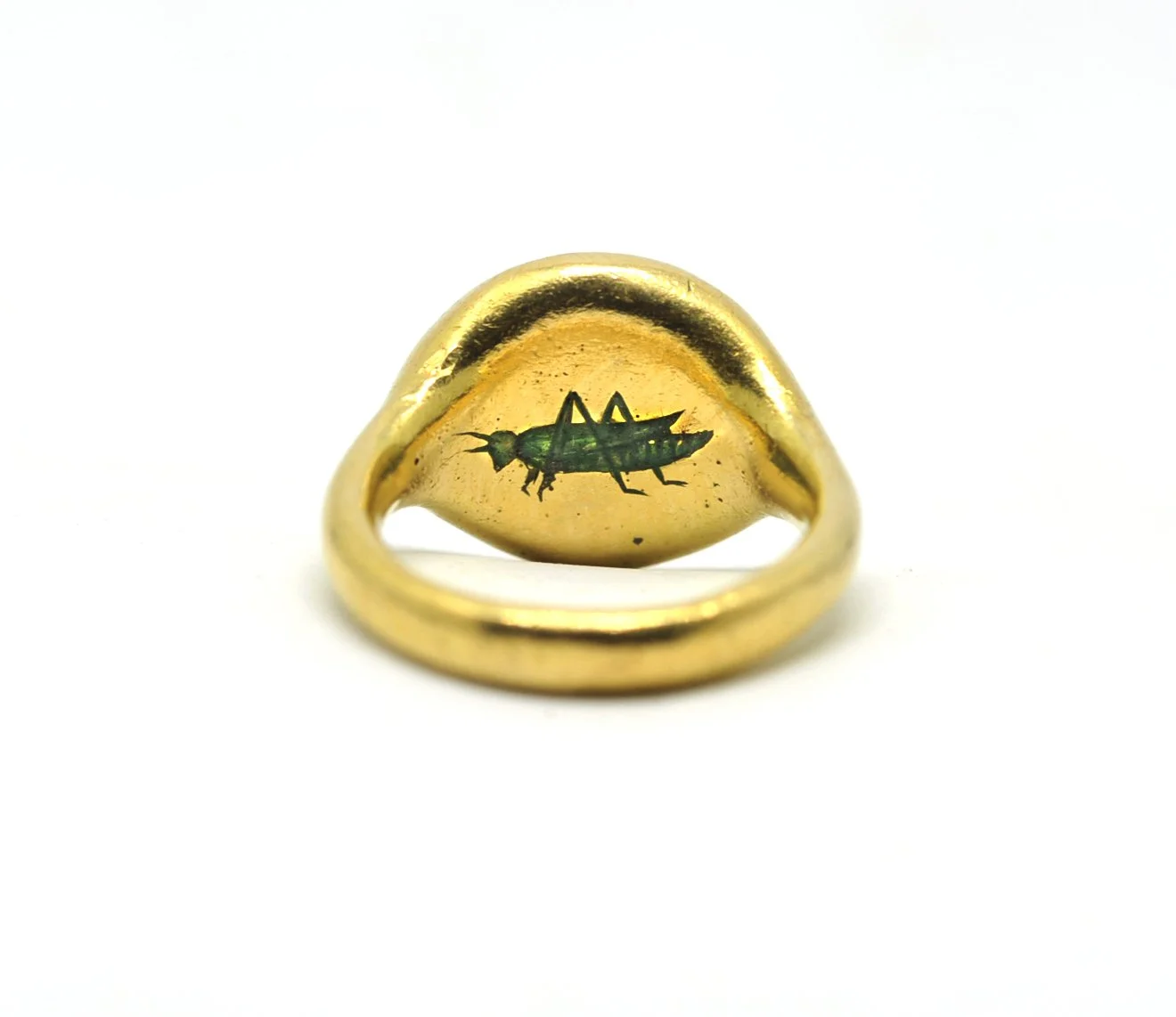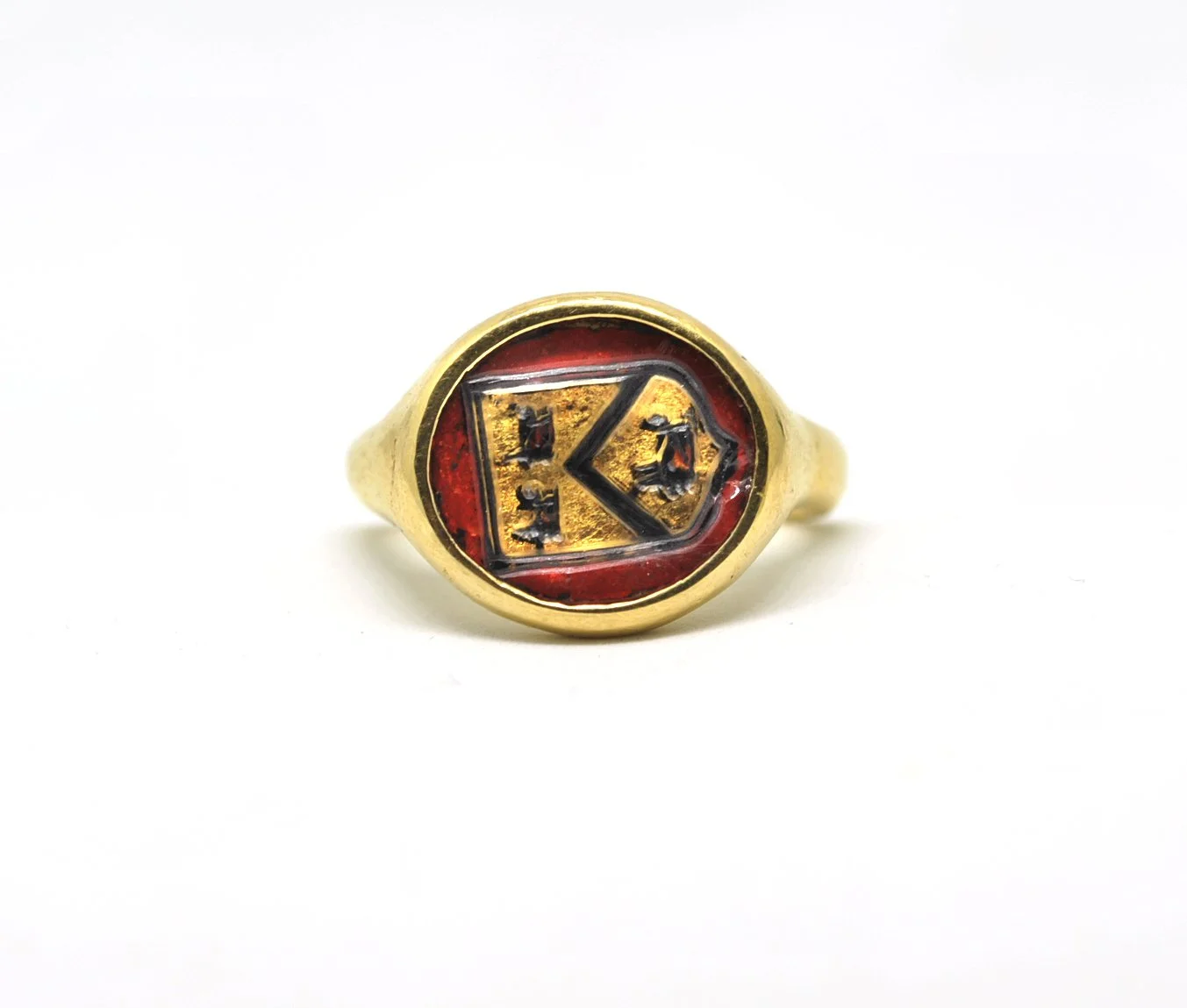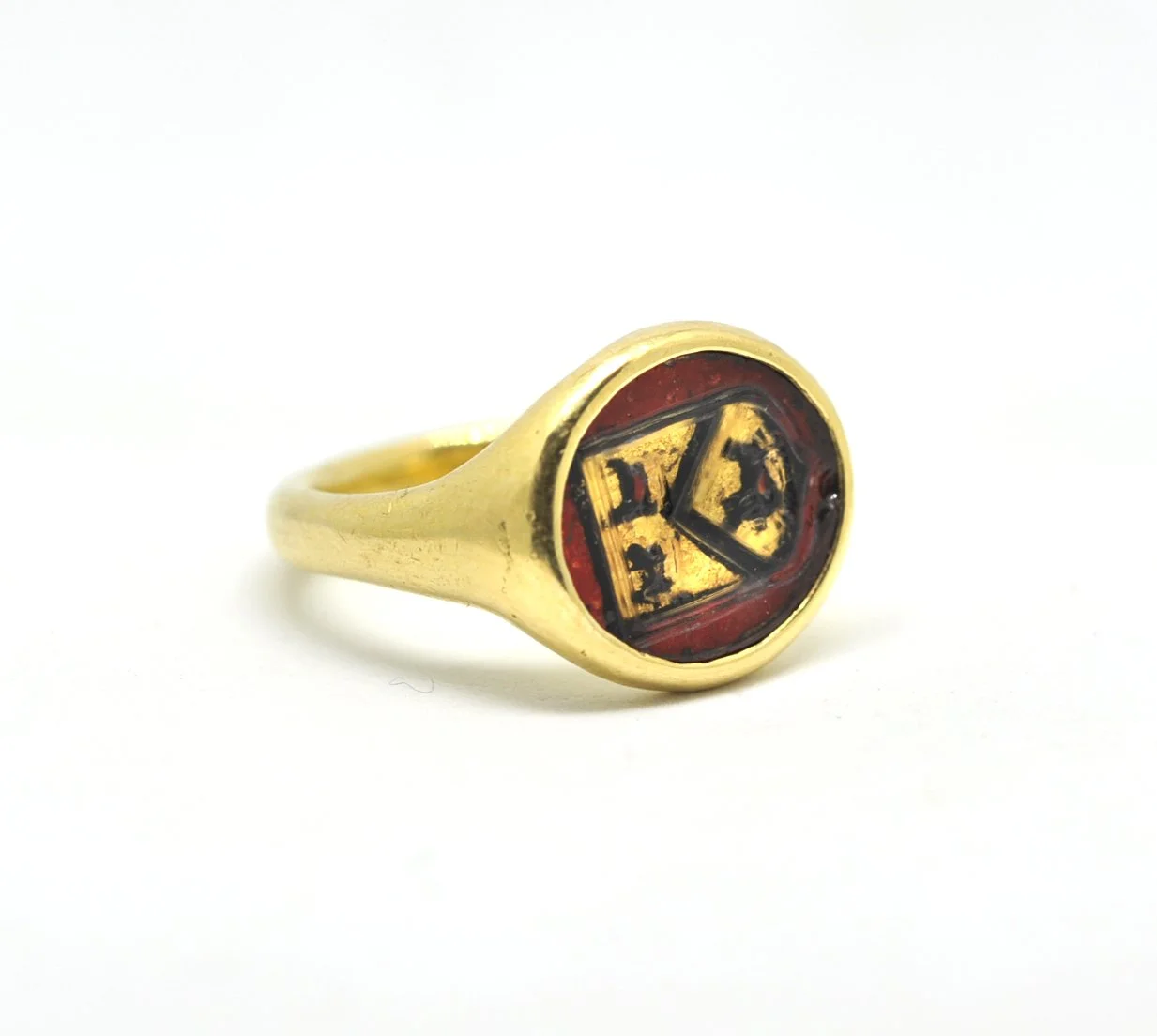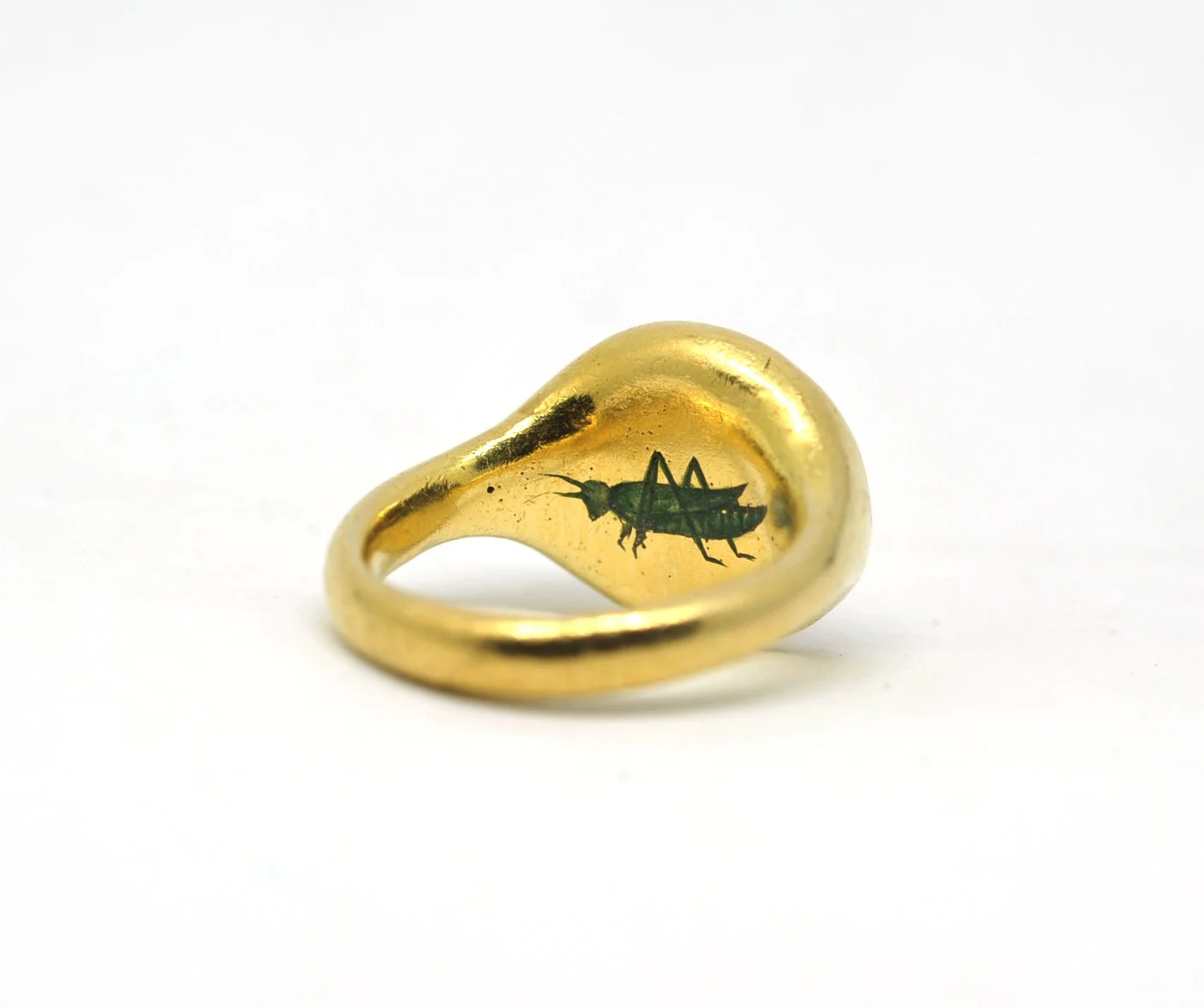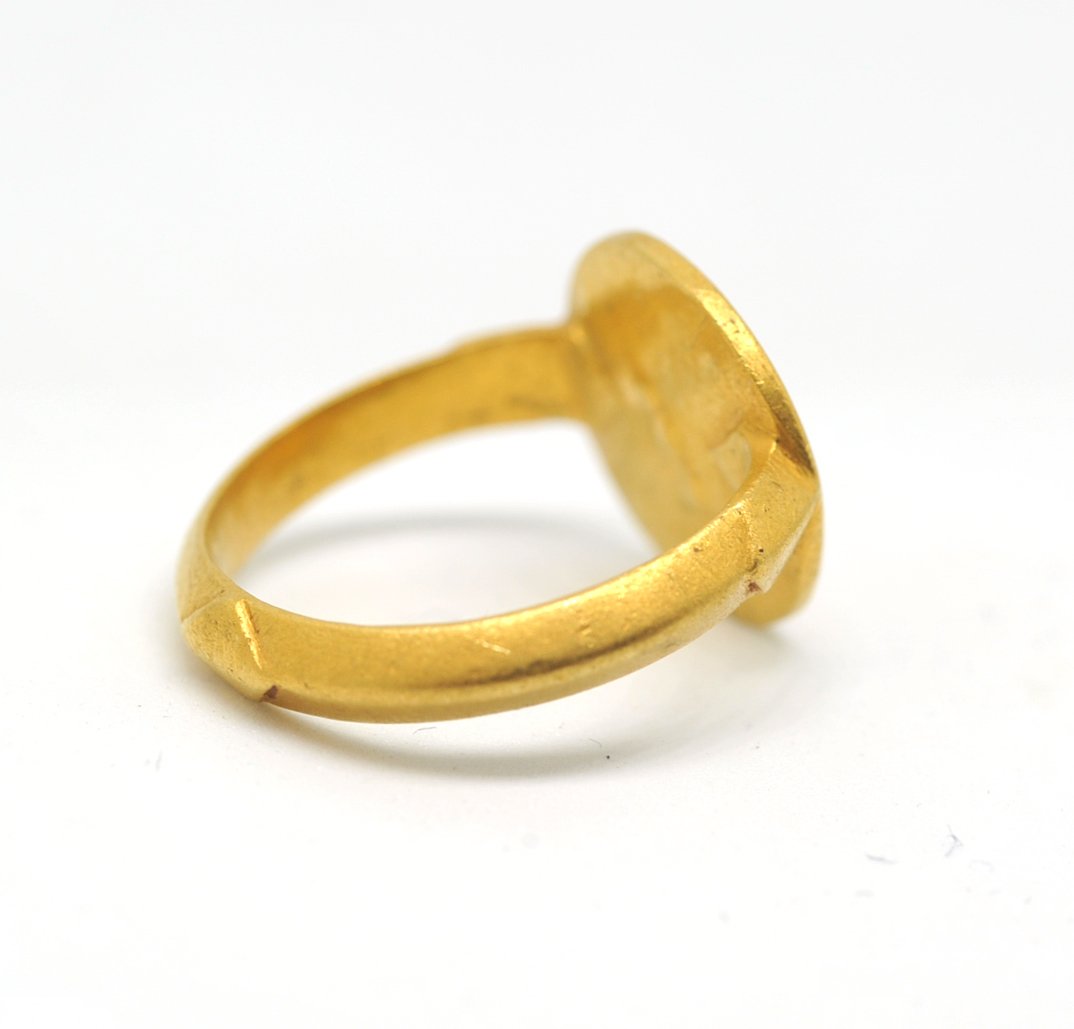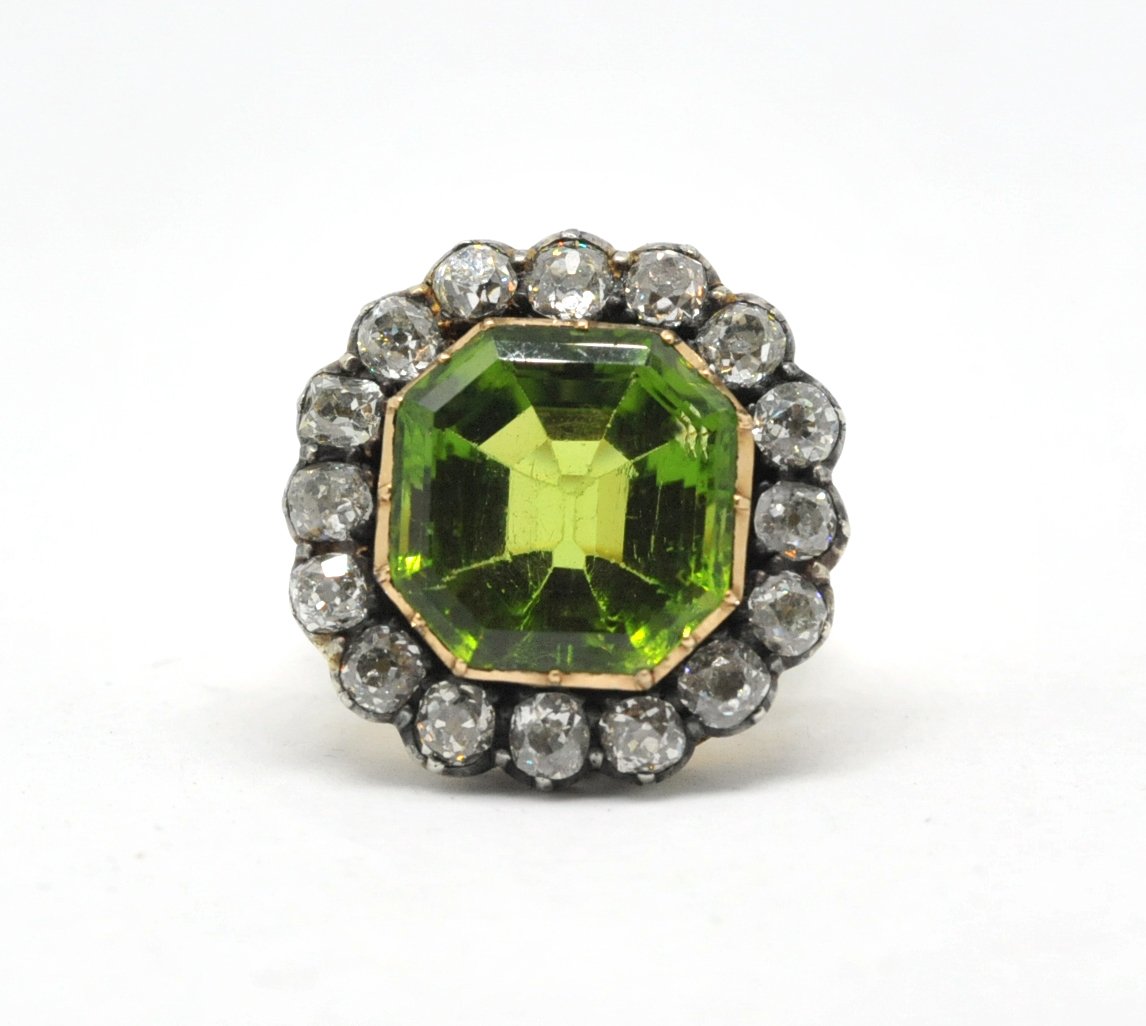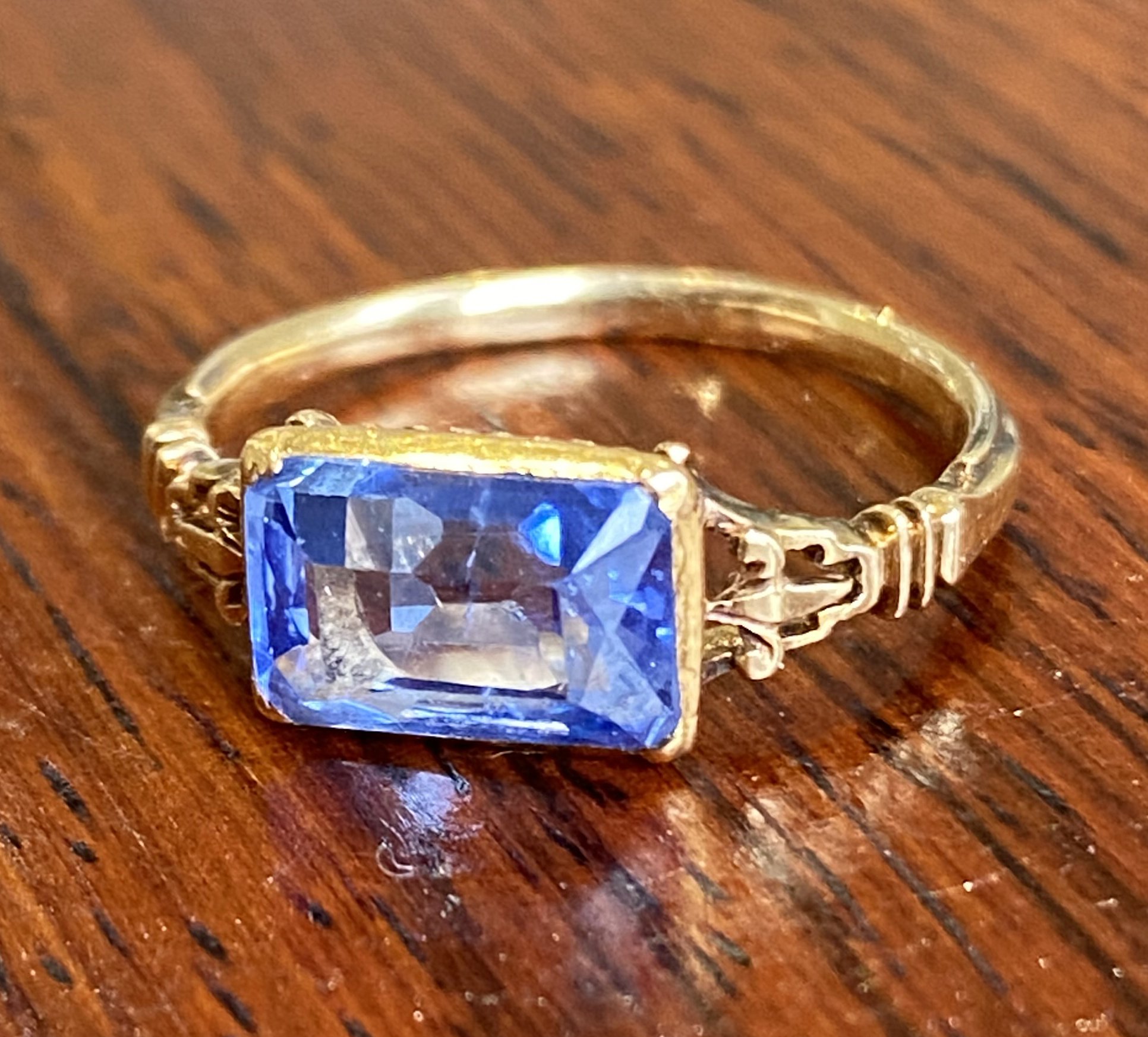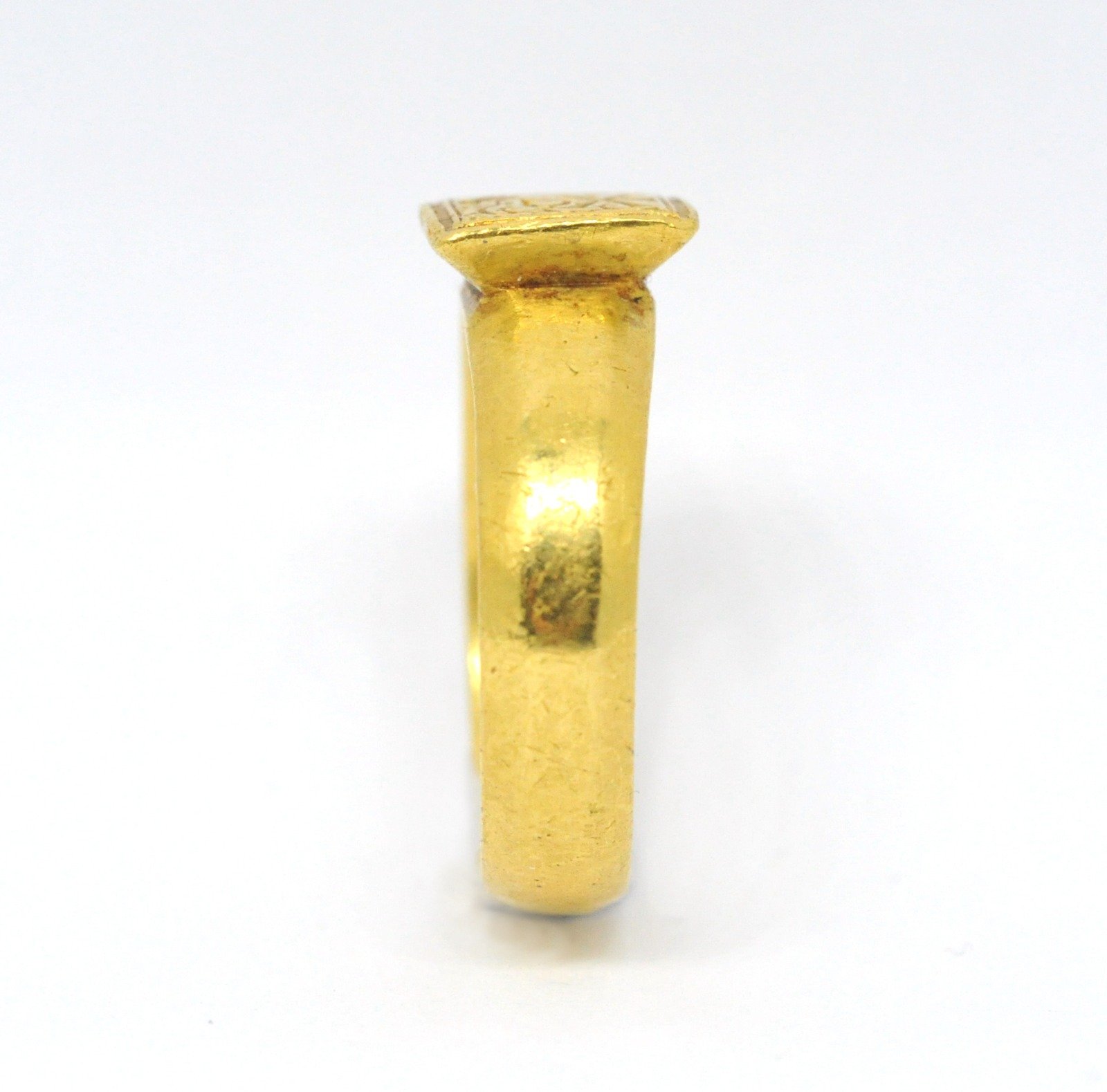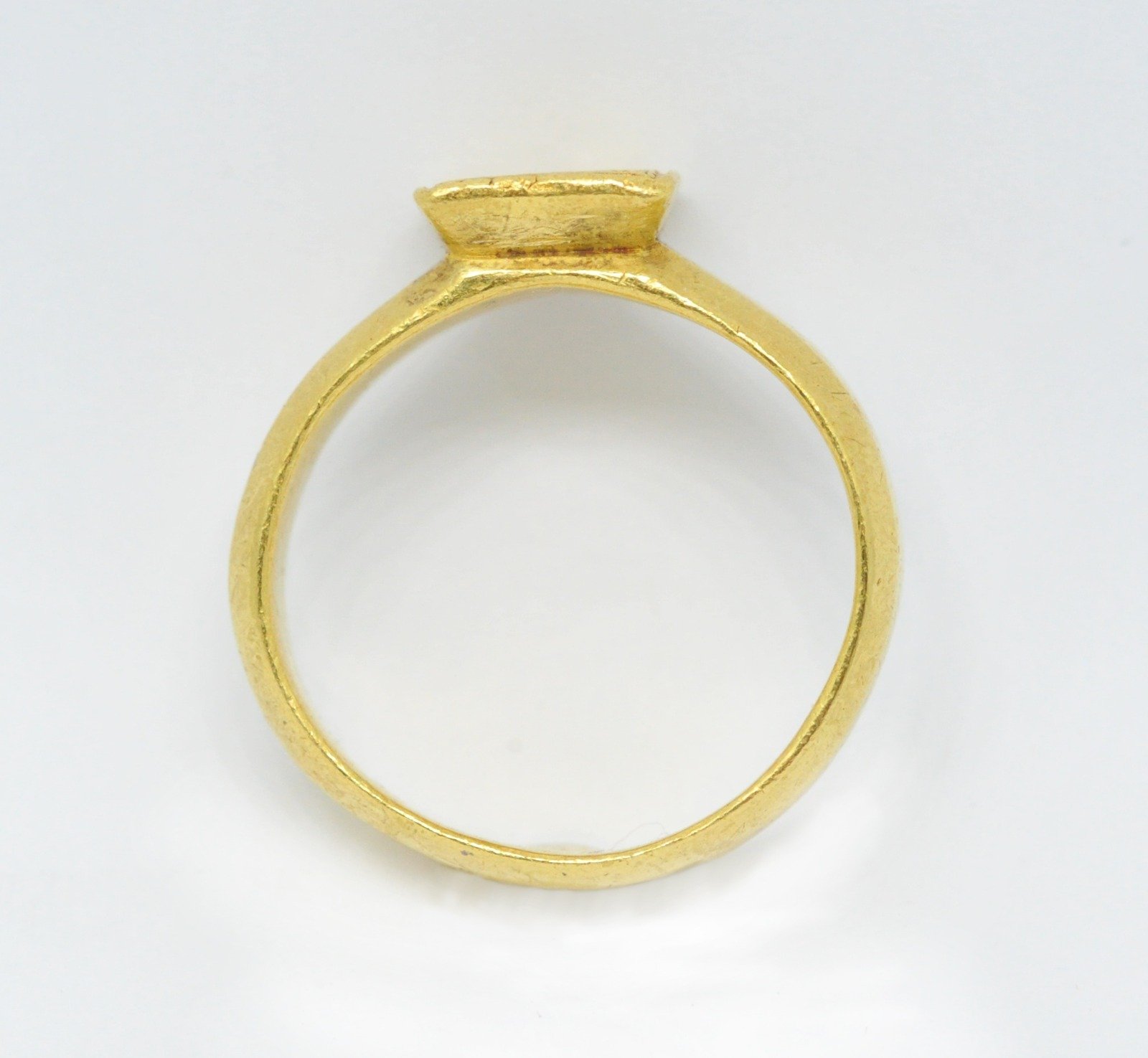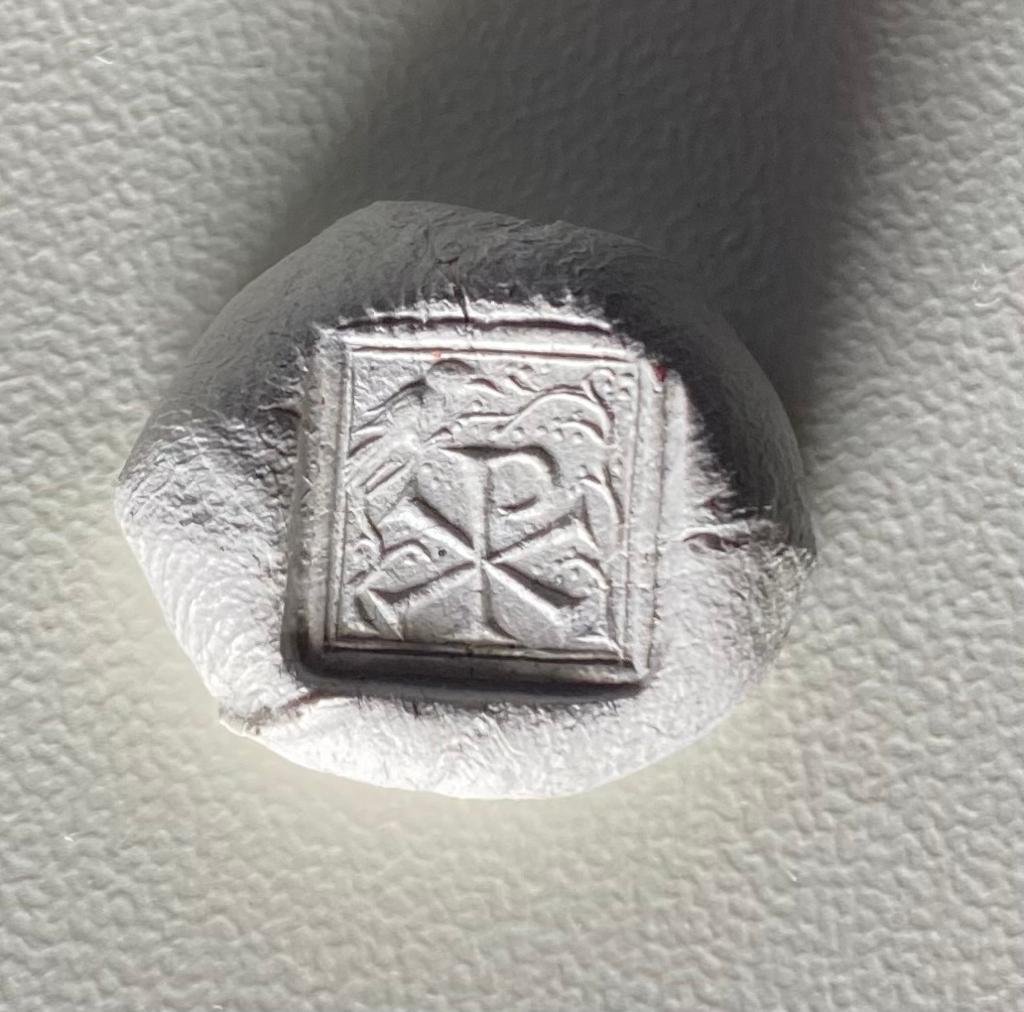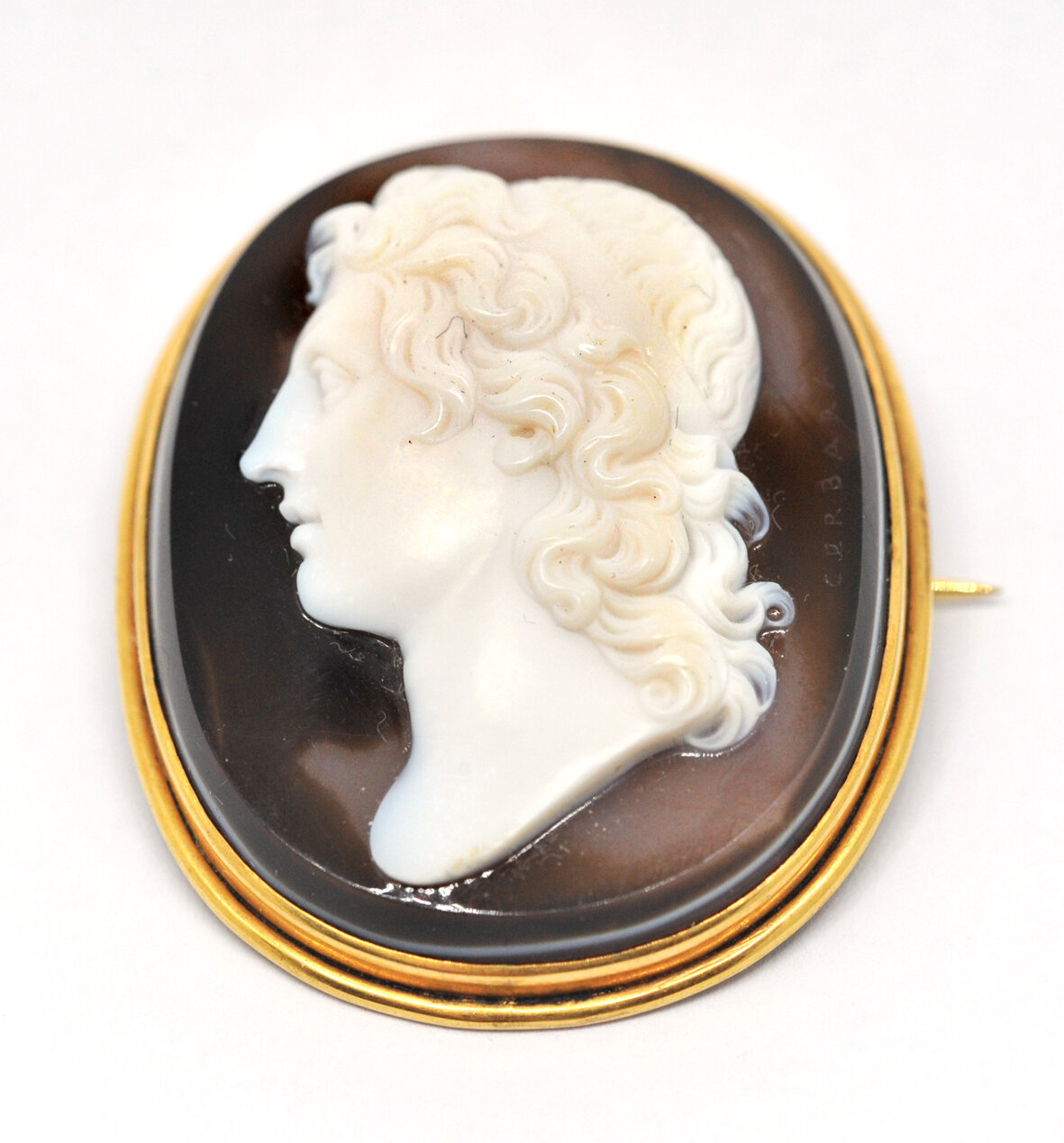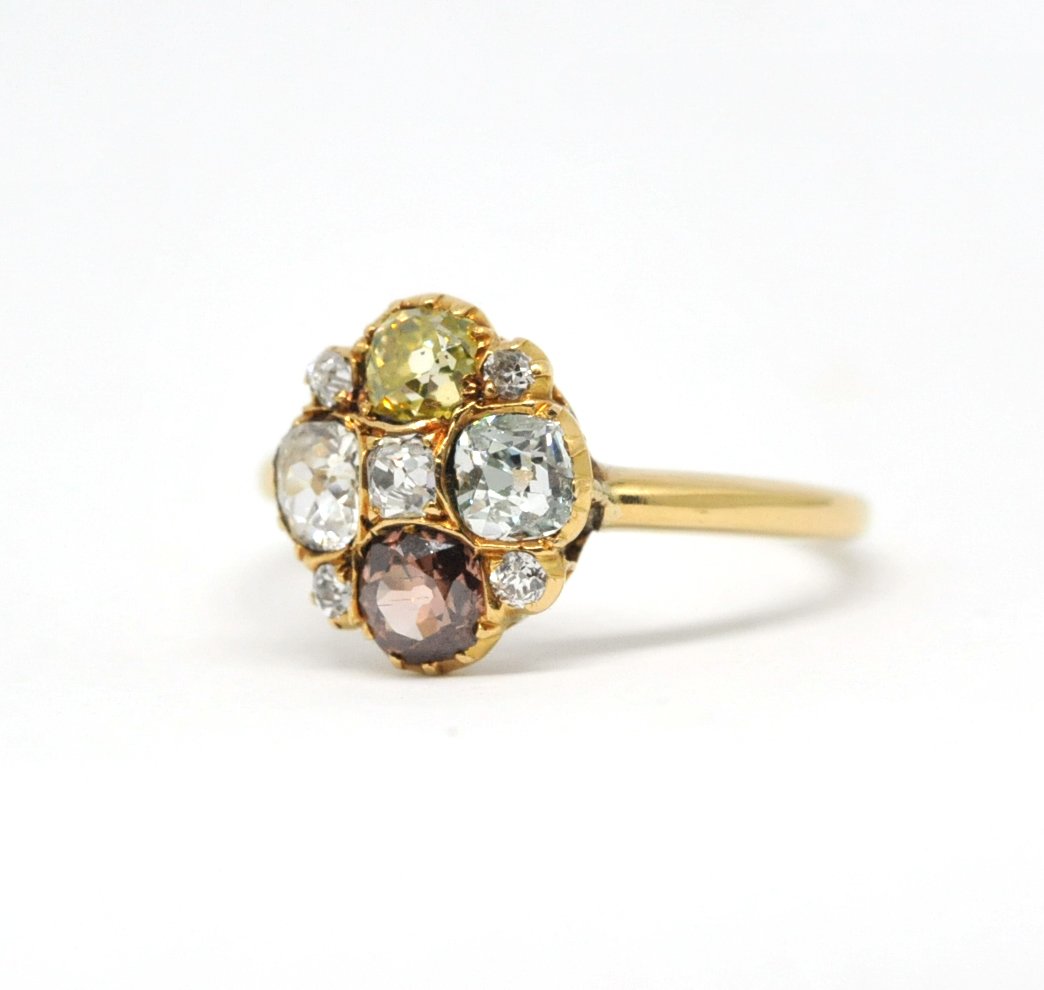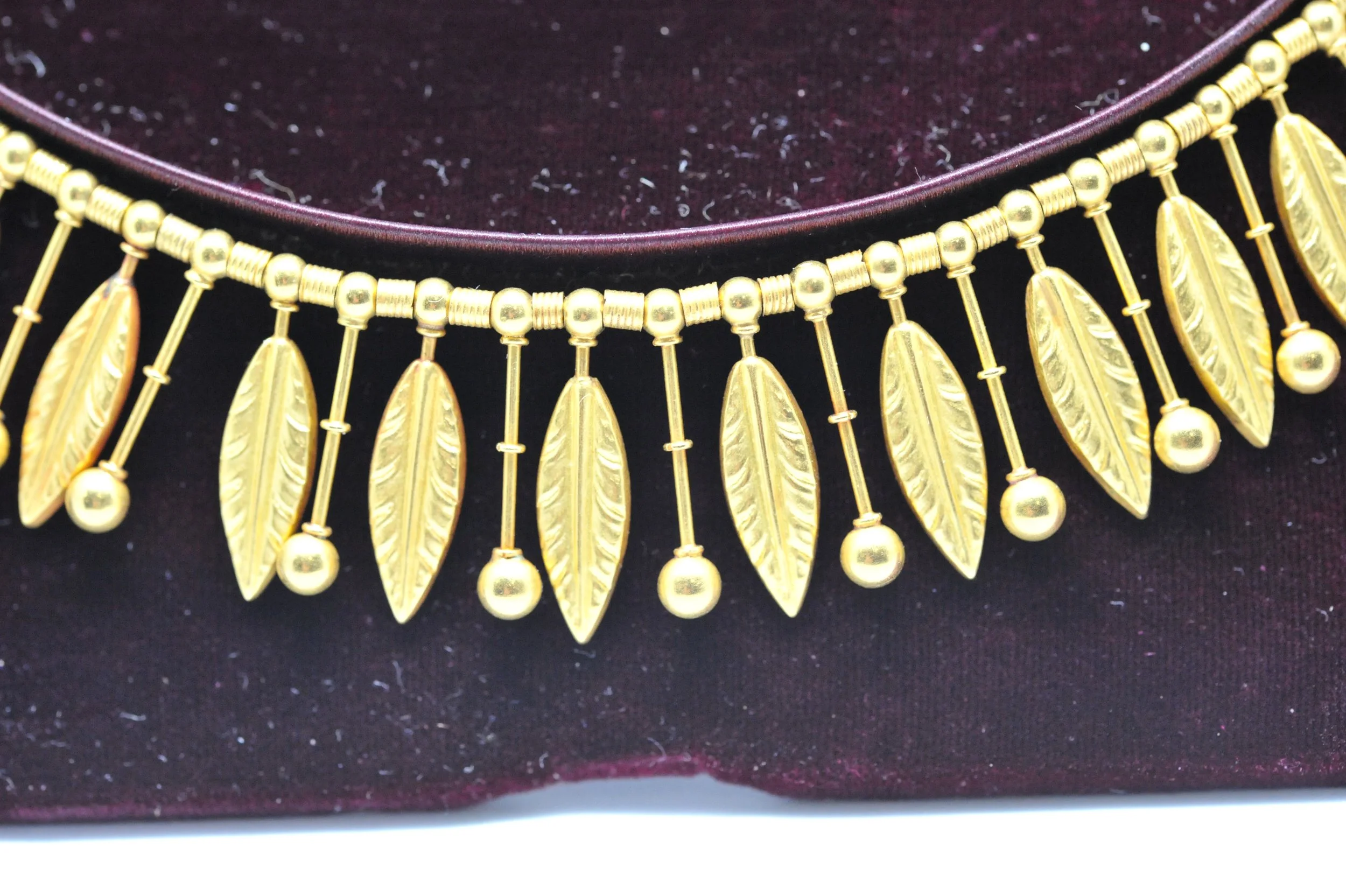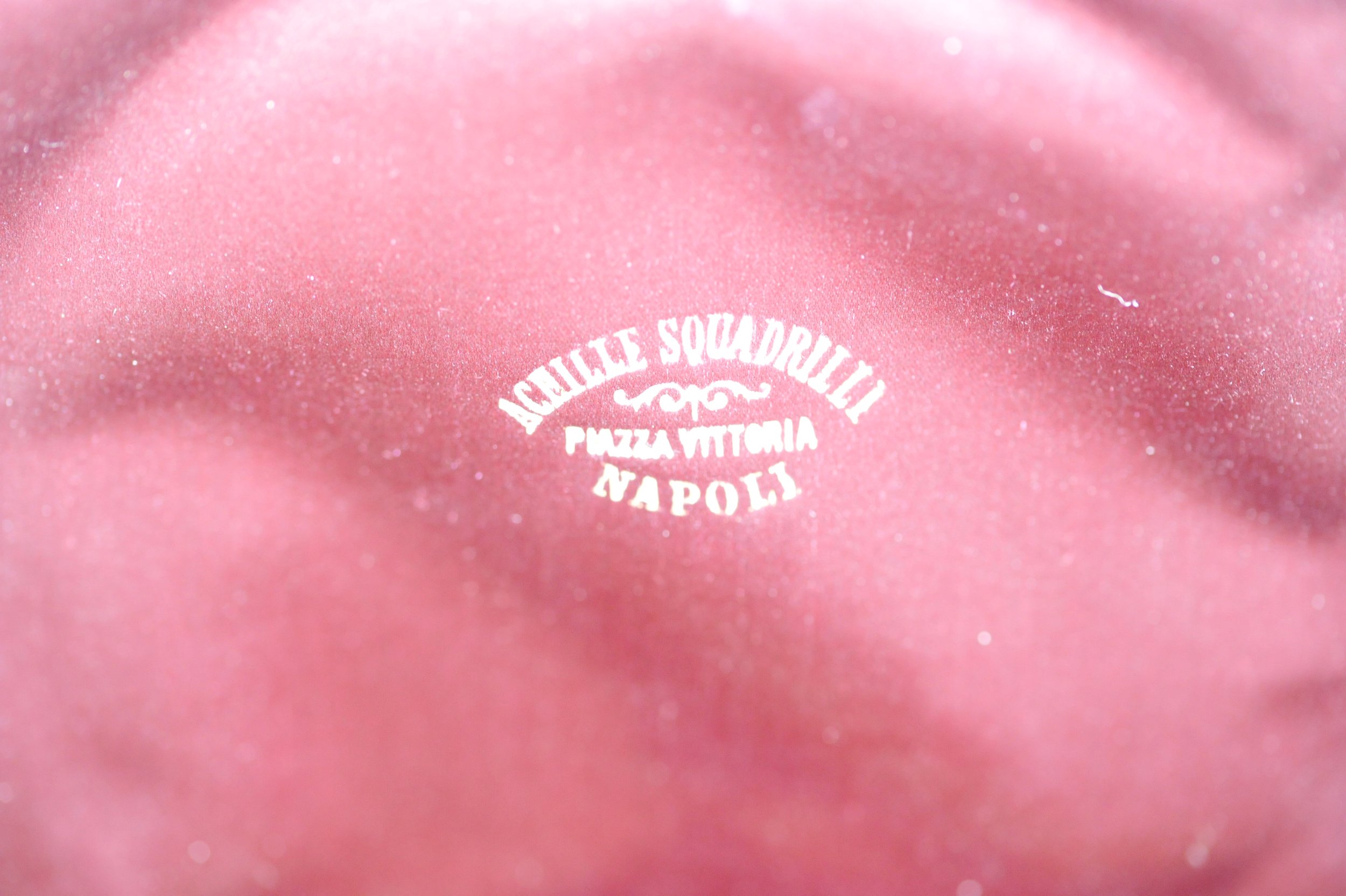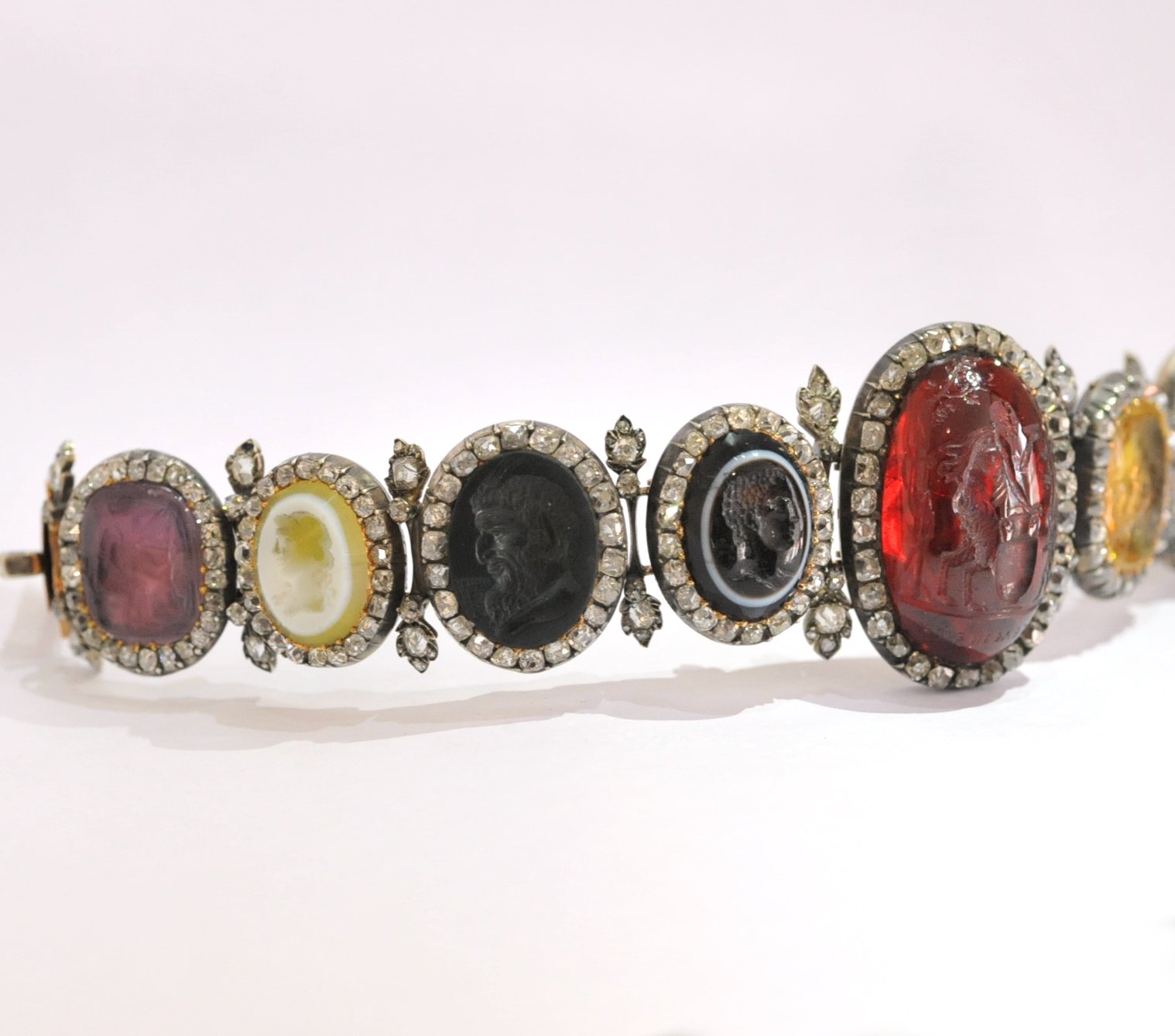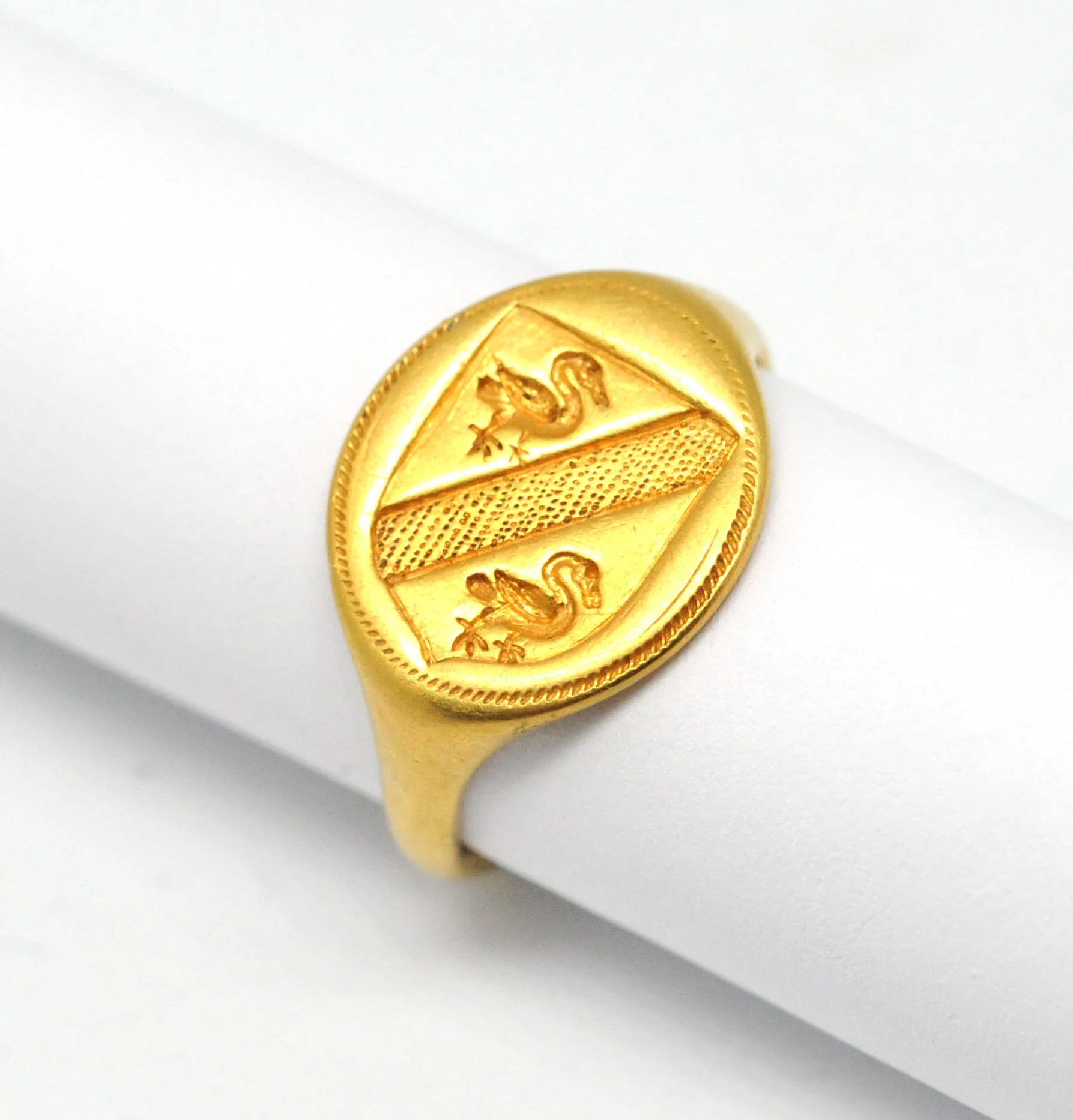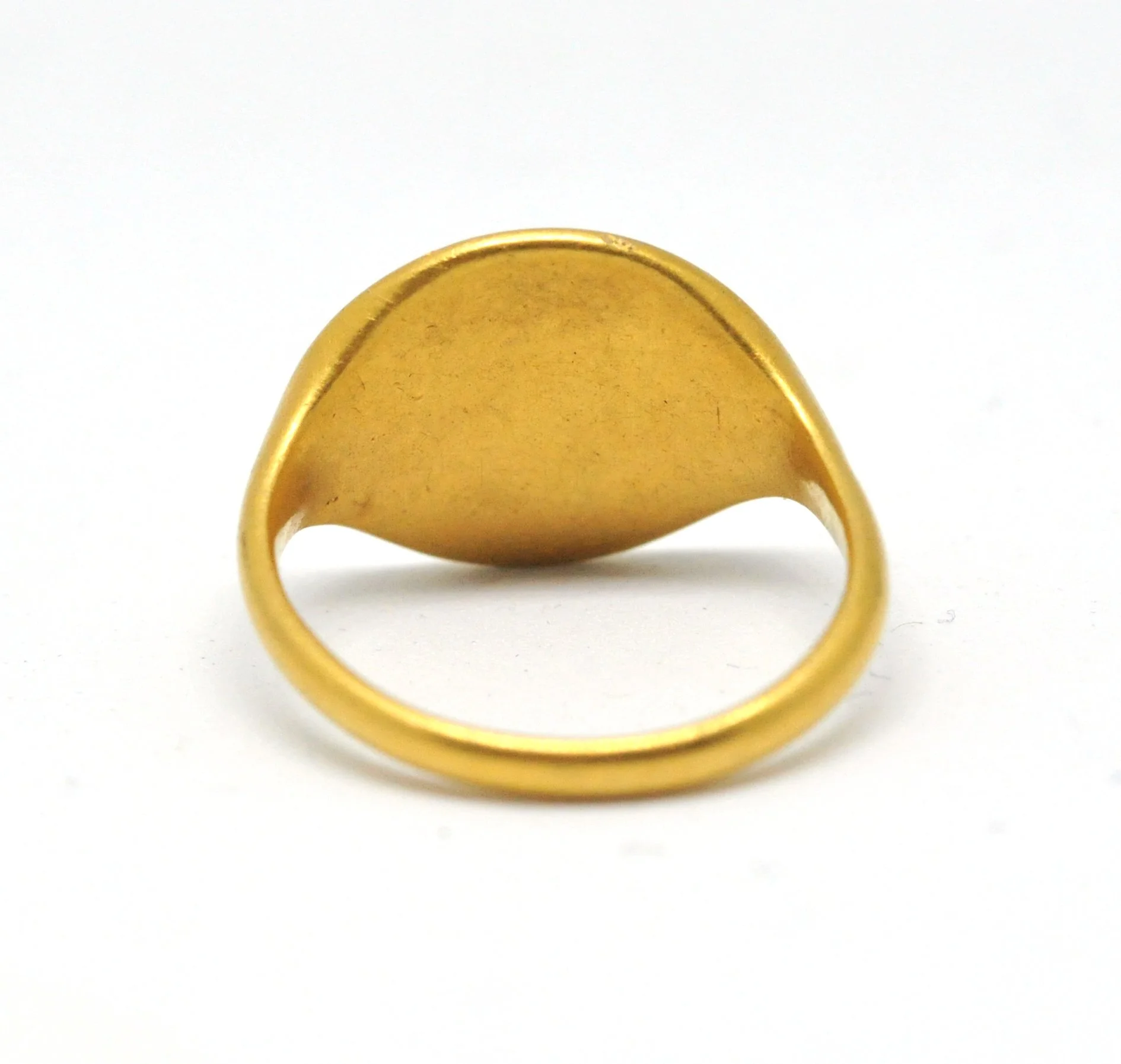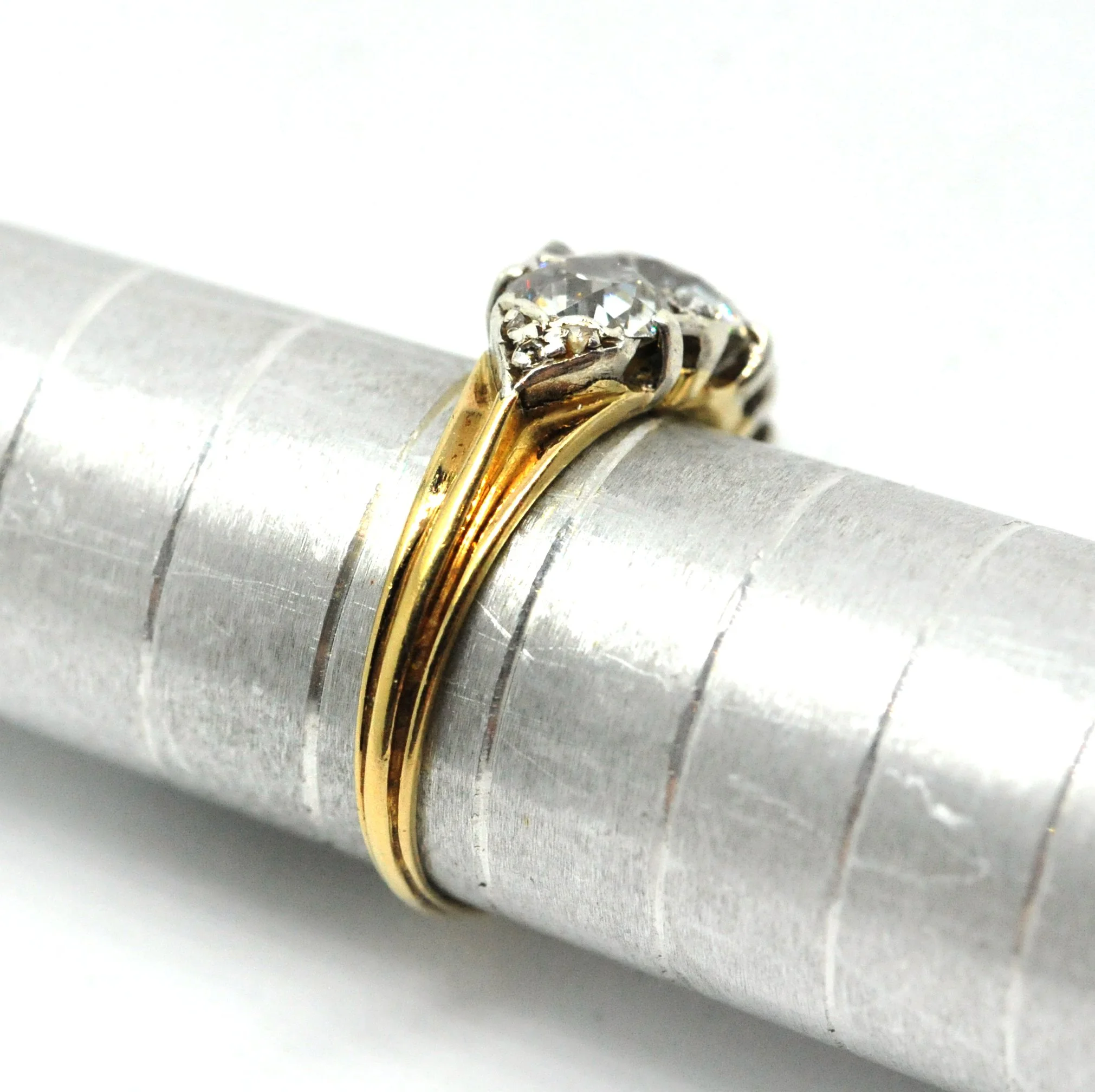Mourning ring for Edward IV (1442-1483)
An oval panel of light blue enamel
applied entwined ER diamond set initials below a knot of hair
diamond set gold coronet above, glazed, and with a line surround of diamonds
Engraved on the reverse:
‘Hair of Edward 4th, who died [Ap]ril 9th 1483, discovered at Win[dsor], March 1789’
Tapering wide gold flat band shank (restored)
The head 37mm long, 11 grams gross
Rings containing locks of Edward IV’s hair are known to have been produced and are in collections. One is in the Hashimoto collection (National Museum of Western Art, Tokyo. Object number OA.2012-0298), one in the process of being gifted to the Victoria and Albert Museum, London, and another in the Museum of London (Object number 35.117) These are of very simple enamelled gold design. A loose lock of hair is also held by the Wellcome Collection, London.
Given the limited supply of hair, it has been assumed that these rings were gifted to dignitaries. Sadly, no details of to whom have been found to date.
The ring shown here is the only known example set with diamonds.
On the 13th of March 1789, workmen were tasked with carrying out renovations to St George’s Chapel, which has been the final resting place of England’s monarchs for over five hundred years. In the course of their work, they accidentally broke into one of the royal tombs beneath their feet, and found that it belonged to Edward IV and his Queen, Elizabeth Woodville. As one of the eleven monarchs’s tombs in the chapel, this is arguably the most significant, since it was King Edward himself who had commissioned the building of the Chapel
in 1475, as the site for his own burial.
Edward IV was one of the most important figures of late medieval England: a key figure in the War of the Roses, Edward seized the throne in 1461 after defeating the Lancastrians at the battle of Towton , only to briefly lose it in 1470 before reclaiming it in 1471. A capable military leader and charismatic ruler, he stabilized the country during his second reign, promoting commerce and strengthening royal authority. He died unexpectedly in 1483, leading to political chaos and the short reign of Richard III then, ultimately, the end of the Plantagenet dynasty.
Edward IV was the father of the ‘two princes’ – his heir Edward V and his younger brother, Prince Richard – who so famously disappeared from the Tower of London after Edward IV’s death, leaving their uncle Richard, Duke of Gloucester, to inherit the throne.
Even to this day, it is unclear what happened to the two boys, but it was long assumed that they were murdered, by their uncle. Richard’s subsequent occupancy of the throne in his nephew’s stead, albeit briefly, irrevocably tarnished Richard’s reputation, whilst the discovery of two small skeletons beneath a stairwell in the Tower in July 1674 – again, an accidental find by workmen – lent credence to this theory.
Since the unknown bodies were reburied in Westminster Abbey long before the science of DNA would have confirmed their identities, it seems that we will be unlikely ever to know the truth of what really happened to the Princes in the Tower. However, for any enthusiast of history, it is thrilling to be able to hold in your hand an object that, in addition to being an important royal jewel, has within it the key to unlocking the mystery that has consumed and scandalised for centuries.
· According to contemporary reports, several relics were extracted from the tomb, including a vial of liquid from the bottom of the coffin (now missing), locks of hair, and fragments of wood from the adjacent coffin. These were presented to the Society of antiquaries in 1790 by John Douglas, Dean of Windsor and Bishop of Newcastle. A diagram and account of the excavation were published by the Society in 1796.
· Rings containing locks of hair are known to have been produced and are in collections. One is in the Hashimoto collection (National Museum of Western Art, Tokyo. Object number OA.2012-0298), one in the process of being gifted to the Victoria and Albert Museum, London, and another in the Museum of London (Object number 35.117) These are of very simple enamelled gold design. A loose lock of hair is also held by the Wellcome Collection, London
· Given the limited supply of hair, it has been assumed that these rings were gifted to dignitaries. Sadly, no details of to whom have been found to date.
· The ring shown here is the only known example set with diamonds.

























